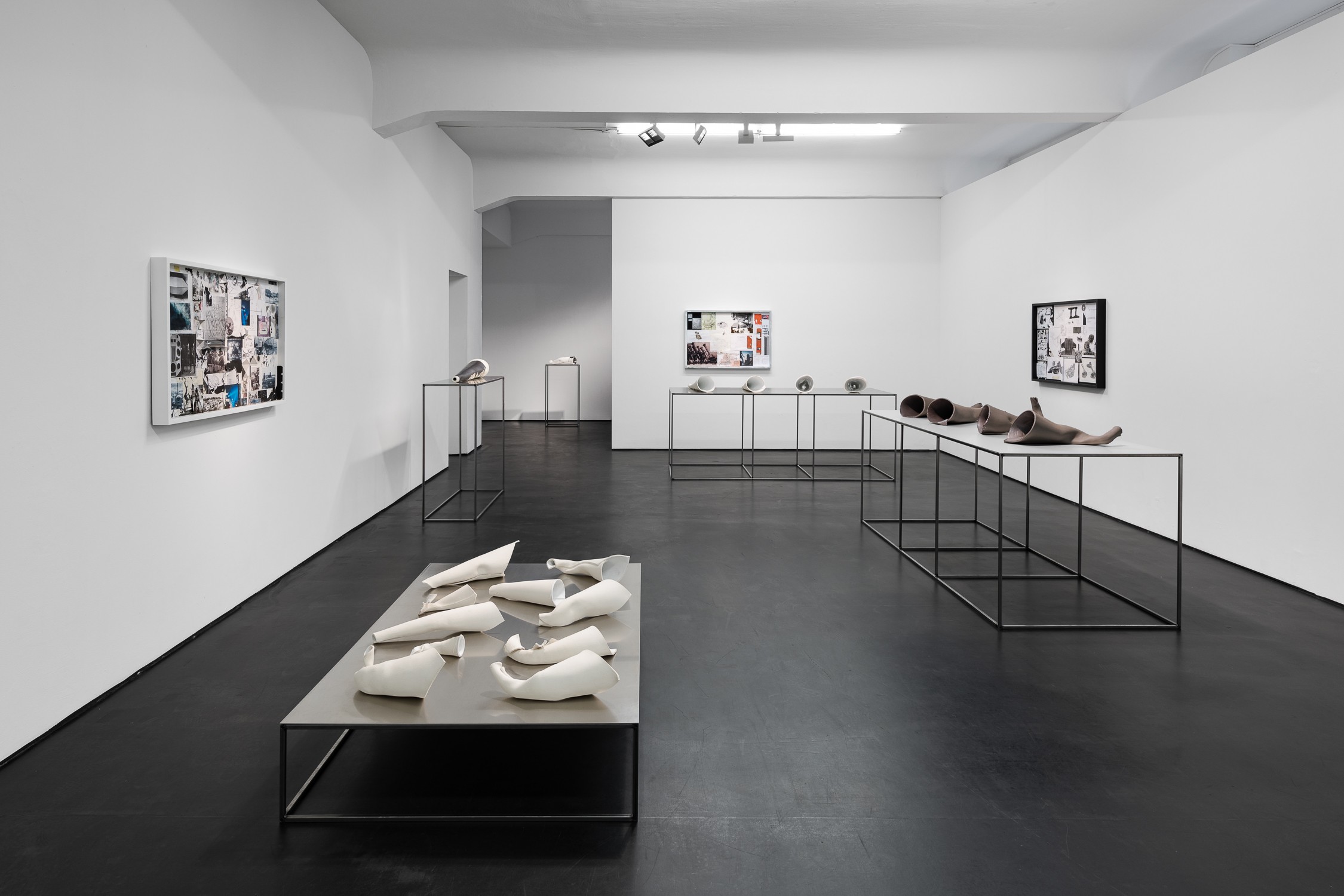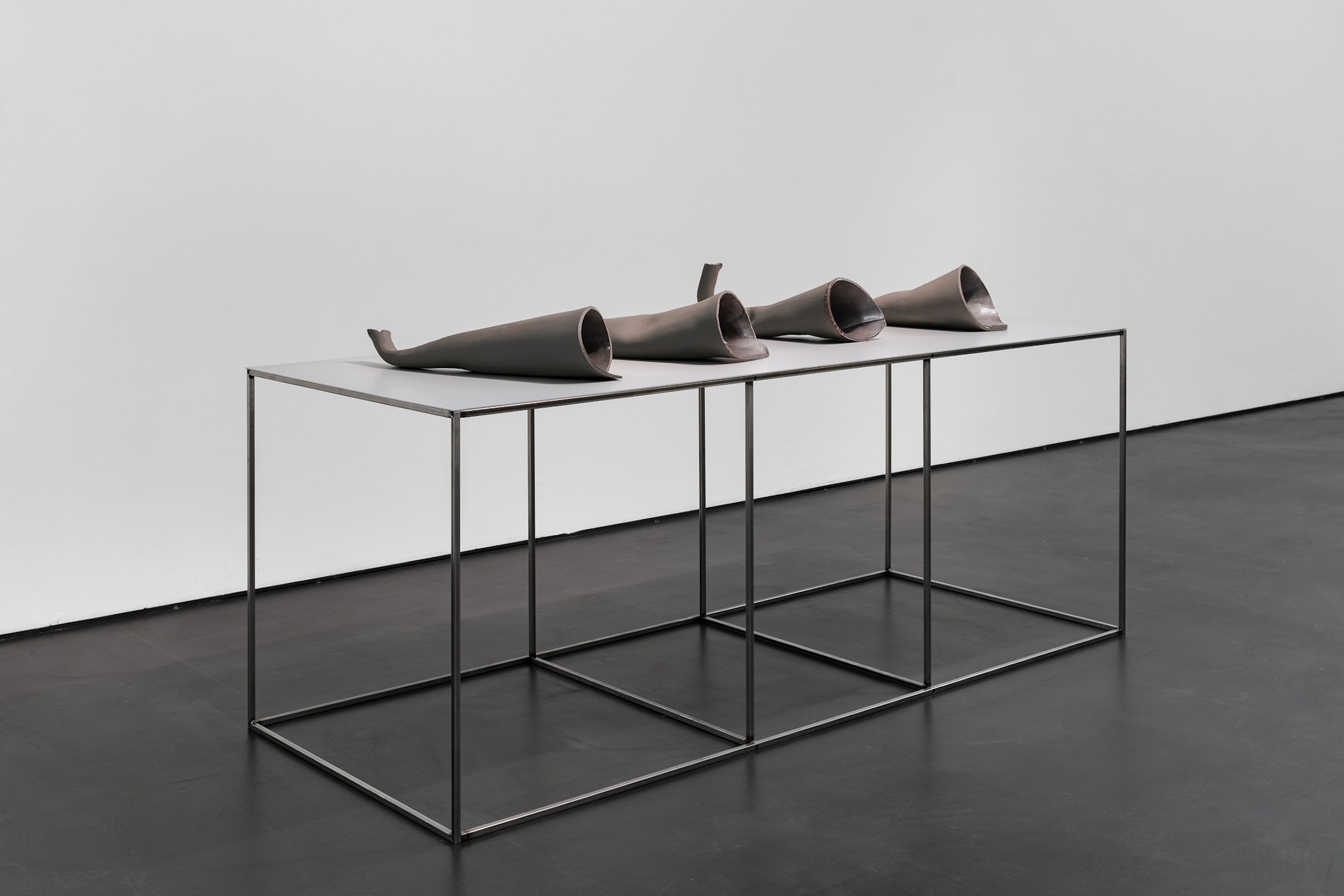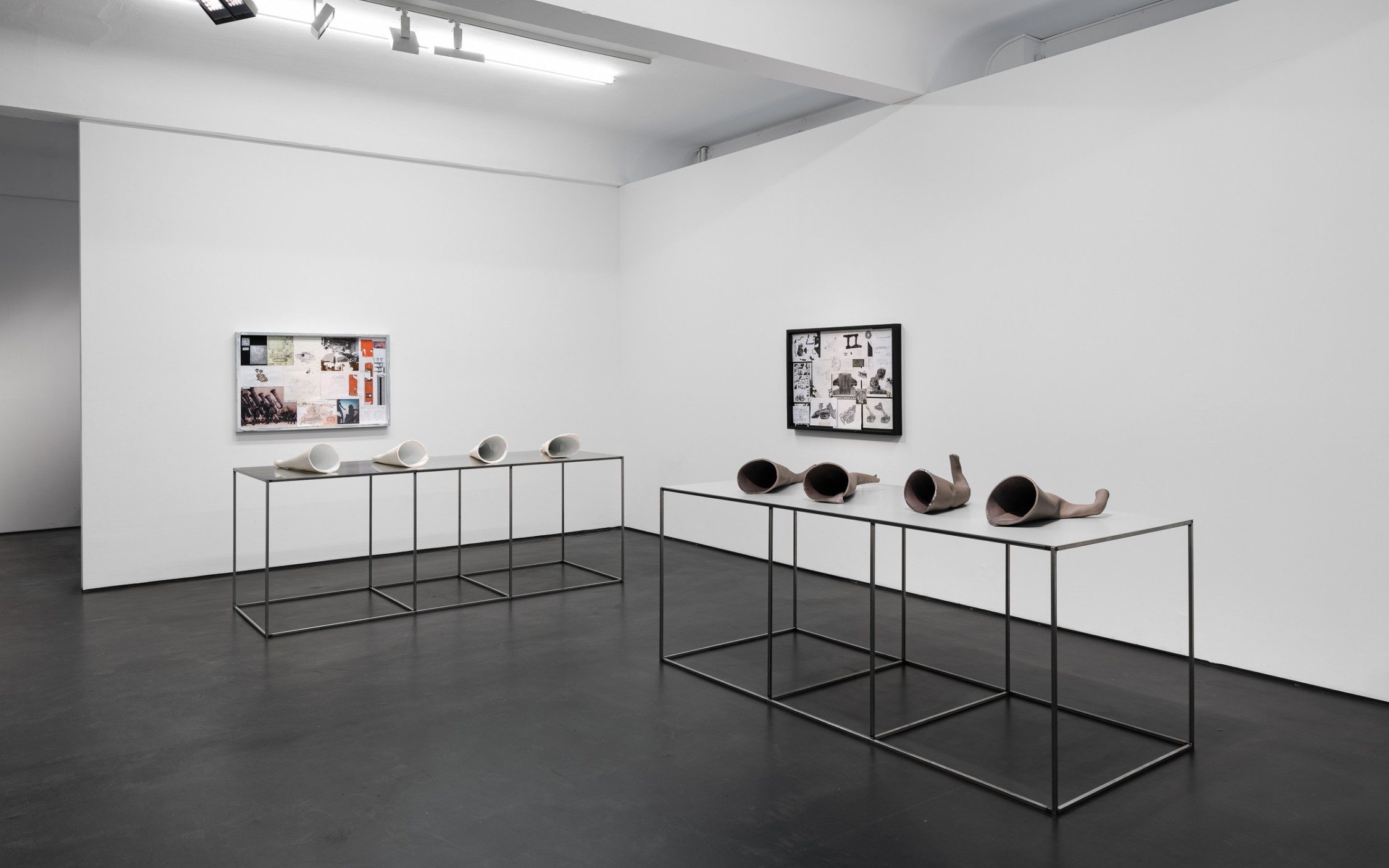






Inke Arns
The Auditory Canal of the Shai-Hulud
“Walk without rhythm, and you won’t attract the worm.” (Dune, 1984)
The objects they brought back from the last excavation now lay before them. They were funnel-shaped horns in different sizes and appeared to be ceramic. Looking at them, Frantz was spontaneously reminded of antique ear trumpets, the trumpets of Jericho, megaphones and also organic body extensions. Strictly speaking, they looked like giant, fossilised versions of the centimetres-long human auditory canal. He tried desperately to remember where he had last seen such an organic funnel shape. Right, it was in a media archaeological paper on the development of the telephone (1876) by the deaf-mute teacher Alexander Graham Bell.
The telephone resulted from a series of scientific attempts to simulate the physiology of sound sensations through the technology of electricity. Even as children, the brothers Alexander Graham and Melville Bell wanted to build a speaking machine. They killed the house cat to use its vocal cords as a mechanical mouthpiece. Before Melville died, the brothers had made a promise: the one who outlived the other would build a device that would enable communication with the dead. Now Alexander Graham Bell also needed a mechanical ear. Bell used the tympana from two corpses to develop the concept of a ‘talking membrane telephone’.[1] As his assistant Thomas A. Watson[2] reported, they now built a ‘real ear telephone’[3] (or ‘human ear phonautograph’) with a human ear’s eardrum and inner bones. The telephone results from a profoundly macabre sensomotoric replacement: namely, that sounds can be produced and heard without a living body. The physical act of hearing was replaced by mechanical processing[4] that – at least in the beginning – required the partial reanimation of dead body parts. Friedrich Kittler thus wrote: ‘Wherever phones are ringing, a ghost resides in the receiver.’[5]
But, thought Frantz, these found objects could not be fossilised human auditory canals, they were far too large. Perhaps they were not in fact sense organs that received signals but were rather extensions of the human body that sent out information. Maybe they were trumpets (Jericho was not far from the excavation site) or so-called megaphones to amplify sound? What if they had something to do with an acoustic weapons system? Were they miniatures of gigantic loudspeaker modules? And then he had an – utterly bizarre – idea: one of his namesakes had built puzzling ‘Adaptives’ in Vienna in 1974, which functioned as 3-dimensional extensions of the human body and, as a ‘score for gestures’ were to turn passive observers into active participants. Perhaps these archaeological finds were such ‘Adaptives’ that the process of fossilisation had preserved?
No, none of that made sense. After extensive taphonomic analyses, Frantz concluded they must be the fossilised remains of the Shai-Hulud’s auditory canal. The Shai-Hulud was the largest of the huge sandworms that once inhabited the arid planet Arrakis. Frantz remembered that the consciousness-expanding drug ‘Spice’ produced by the sandworms only existed there, where it was a requirement at the time for interstellar space travel at faster-than-light speeds. Sandworms fed on living creatures and things that moved on the sand’s surface. The worm had fine-tuned sensors in its auditory canal that allowed it to sense every vibration in the sand from kilometres away. For this reason, the Fremen, the inhabitants of Arrakis, set up ‘thumpers’ to emit a steady vibration to attract a worm for a ride. To camouflage their own footfalls from a worm, they had to walk in irregular steps without any recognisable rhythm.
Frantz blinked as he looked at the Shai-Hulud’s auditory canal through an electron microscope. Of course, he knew that this worm had never existed in reality. He had seen the Shai-Hulud in an old, post-apocalyptic film[6] and he had a vivid imagination. He forced himself to think calmly. Was the object not an early instrument after all? A type of bugle that conveyed secret information over long distances. The object reminded him of the abeng, a bugle made from a cow horn that the Maroons used for their secret communications to protect themselves from the British colonisers in the 18th and 19th centuries. The Maroons were former slaves who fled from Jamaica’s sugar plantations in the early 18th century to the island’s Blue Mountains where they fought for autonomy.
Frantz looked down at himself. The stillsuit that recycled the Fremen’s bodily fluids and thus kept fluid loss to a minimum worked flawlessly. Like the Maroons, the Fremen (a name derived from ‘free men’) were the damned of this Earth. He grasped the object, held it to his lips and blew into the horn. It emitted a long, resonant note.
[1] Bell, quoted in Charles Snyder, “Clarence John Blake and Alexander Graham Bell: Otology and the Telephone”, in: The Annals of Otology, Rhinology and Laryngology, 83. Supplement 13, 1974, pp. 3-31, here: p. 14.
[2] Thomas A. Watson was a spiritualist who conjured up spirits at nightly seances. His attempts to communicate with the deceased in the afterlife provided important inspiration for the development of the telephone. Cf. Avital Ronell, The Telephone Book: Technology, Schizophrenia, Electric Speech, University of Nebraska Press, Lincoln 1989
[3] Thomas A. Watson, Exploring Life: The Autobiography of Thomas A. Watson, New York 1926, p. 90
[4] Cf. Anthony Enns, “Telepathie – Telefon – Terror. Ausweitungen und Verstümmelungen des Körpers”, in: Hörstürze. Akustik und Gewalt im 20. Jahrhundert, Nicola Gess, Florian Schreiner, Manuela K. Schulz, Würzburg: Königshausen & Neumann, 2005, pp. 89-112, here: p. 98.
[5] Friedrich Kittler, Gramophone, Film, Typewriter, Stanford University Press, 1999, p.119
[6] Dune (1984) by David Lynch, 136 min